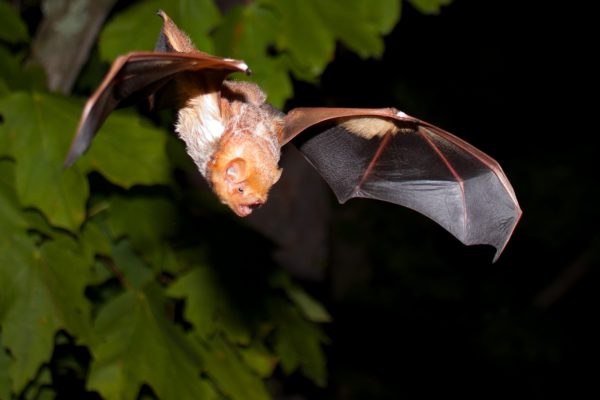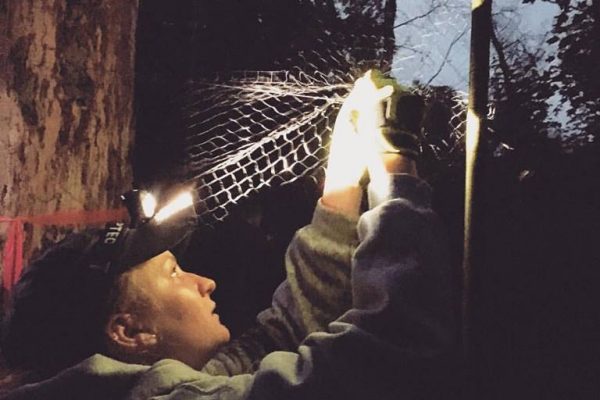Bats
Home » Our Services » Bat & Avian Research & Monitoring » Bats
We offer a wide range of expertise on bat issues, from sensitive species surveys to habitat risk assessments. Our bat team has successfully planned, coordinated, and completed hundreds of bat monitoring projects that required developing training materials, survey datasheets, survey protocols, and communication protocols for remotely based biologists and technicians.
Our field staff are permitted by the US Fish and Wildlife Service to capture, handle, and track endangered, threatened, and sensitive species, including Indiana bat, northern long-eared bat, gray bat, and big-eared bat, across their ranges. WEST’s bat biologists are also recognized leaders in quantitative and qualitative approaches to identify bat species acoustically.
The WEST team is leading research, monitoring, and conservation planning. This includes investigating new methods of bat monitoring, such as landscape-level habitat monitoring, the US Geological Survey-approved North American Bat Monitoring Program protocol, utilization of drones in acoustic surveys, and the use of detection dogs in bat fatality searches.
Bat Areas of Expertise
- Analysis of Species Identification
- Mist-Netting Surveys
- US Fish and Wildlife Service Compliance Support
- Bat Conservation Strategies
- Acoustic Monitoring Surveys
- US Fish and Wildlife Service Presence/Absence Surveys
- Hibernacula Surveys
- Habitat Assessments
- Passive Acoustic Activity Monitoring
- Maternity Colony Surveys
- North American Bat Monitoring Program
- Deterrent Studies
- Smart Curtailment
- Portal Surveys
Publications
Bat Activity Rates do not Predict Bat Fatality Rates at Wind Energy Facilities
D. L. Solick, Diem Pham, Kristen Nasman, and Kimberly Bay
2020
Distributions of eastern and western red bats in western North America
D. L. Solick, R. M. R. Barclay, Larisa Bishop-Boros, Quentin R. Hays, and C. L. Lausen
2020
Red bat fatality: Geographic extents through deuterium and niche models
R. A. Murtaugh, A. P. Capparella, J. C. Kostelnick, and Greg D. Johnson
2019
Carcass Age and Searcher Identity Affect Morphological Assessment of Sex of Bats
D. M. Nelsen, J. Nagel, R. Trott, C. J. Campbell, L. Pruitt, Rhett E. Good, G. Iskali, and P. F. Gugger
2018
A Simple Method for Estimating Bird and Bat Fatality Rates and Comparison of Statistical Properties of Other Estimators
Wallace P. Erickson, A. Merrill, M. K. Sonnerberg, and Paul A. Rabie
2013


